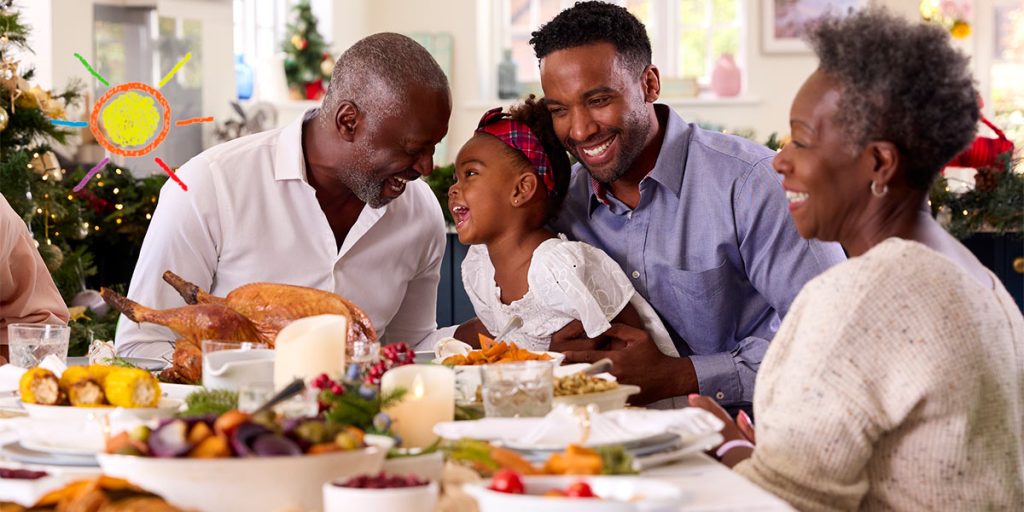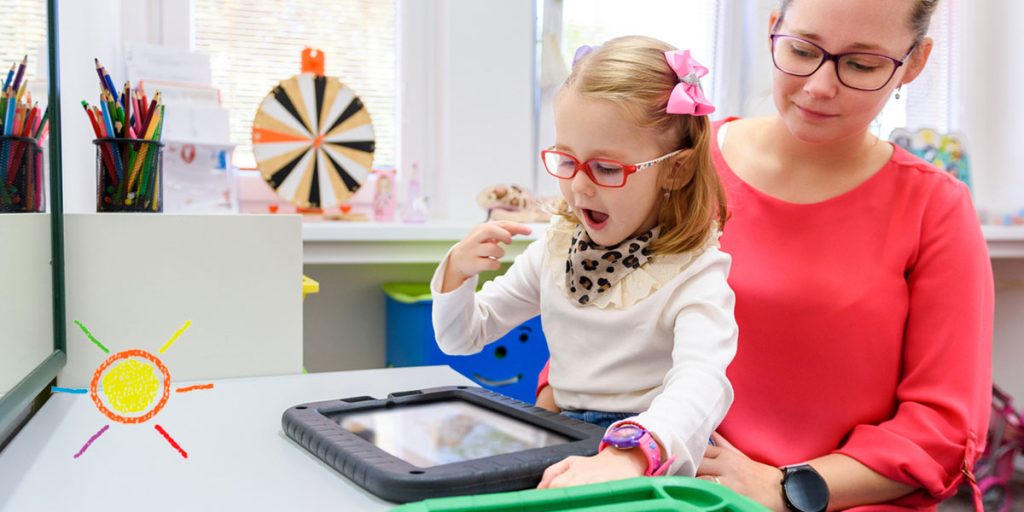The holiday season is quickly approaching! With so many fun activities, festive cheer and snowy adventures to participate in this winter, it is essential to consider ways that your loved one with autism can also make the most of the holiday months ahead. In a few simple steps, the whole family can have a memorable winter season together and even create new traditions to celebrate each year ahead.
Keep reading to find a fun holiday routine for your child with autism that you can make during the winter.
Keep a Consistent Routine for the Holidays
A regular schedule of daily activities acts as a comforting constant for a loved one with autism. Predictability and creating order in their lives allow them to thrive most in a world they feel they can expect on a daily basis. Surprises may seem fun, especially with many festive activities right around every corner. Instead, you can introduce these opportunities slowly into your consistent schedule can make the transition from fall to winter much easier for you and your child!
If visiting Santa can be a fun experience for the whole family, try to make this trip when you usually find yourself in that mall, foot court or shopping center. This frequently visited place can become easily recognizable for your child, making the surrounding environment comforting and routine. They may even be intrigued by Santa’s appearance and want to say hello! This subtle introduction will create a smooth transition from a routine shopping trip to a quick visit with Kris Kringle right in time for the holidays.
Set Boundaries for Your Child With Distant Family and Friends
Seeing your loved ones around the holidays makes this time of the year special for many people worldwide. While this may be what you look forward to the most during winter, these opportunities can easily come as a surprise during the holidays for children with autism.
The easiest way to see your friends and family over the holidays is to set healthy boundaries with all parties. Rather than travel to others’ homes, invite them to visit your residence. This familiar environment will be comforting for your child with new guests over. You can establish a quiet place for them to relax and play away from the gathering area to avoid unpredictable noises from conversation and music.
Educating your friends and family about your child’s boundaries can also create a calm environment and awareness that can help everyone enjoy the holidays together. Remember to keep a consistent routine with normal meal times, a familiar environment and healthy boundaries will start to take shape!
Practice Ahead of Time
Practice makes perfect! This statement is especially true when the holidays are approaching. When children only get to decorate a Christmas tree, light the menorah or sing holiday songs once a year, it can be easy to get used to the parts of the year without these celebrations.
You can practice reintroducing them to traditions one step at a time to get your child in the spirit of winter cheer. Start by showing your loved one with autism pictures of Santa Claus before visiting him in your local shopping center, or show them images of holiday decorations you expect to set up around your home. These subtle introductions can be the first step toward a comfortable holiday with the whole family.
Letting your child pick their own choices during activities can also help them practice safe and predictable circumstances that they can enjoy. If they might not want to sit on Santa’s lap, that’s perfectly okay! Let your child stand next to him if they prefer or sit in front of him where Santa is out of view. You can also practice saying “thank you” when opening a gift so your loved one with autism understands the tradition of gift-giving.
Decorate With Sensory-Friendly Decor
The flashing lights and ugly sweater designs around every corner that ring in the holiday season are not always the most sensory-friendly decorations for your child. You can make decorating your home in the winter more fun for everyone by using subtle designs and lights ideas that everyone can admire, including:
- Christmas pillows and throws: Sounds from holiday music and singing carols can be fun but cause noises to circulate in the home easily. Placing winter-themed pillows and throw blankets where your child enjoys spending time can help absorb these sounds for a sensory-friendly space. The added decoration of these furniture pieces can also spice up the Christmas spirit around your home!
- Simple patterns: Curtains, ornaments and rugs can have an abundance of busy holiday-themed patterns. These patterns are traditional in Christmas decorations but are only some of the sensory-friendly choices to put in your home. Instead, finding decorations that use a monochrome color palette or subtle symmetrical patterns is an excellent selection of interior styles your child can admire.
- Warm and soft light tones: Bright white flickering lights can be overstimulating to the senses when hanging them up outside or around your Christmas tree. Luckily, light alternatives can create a sensory-friendly option! Try to choose string lights that do not flicker and emit a soft white or dim yellow tone.
As always, you may need to be adaptable and flexible with your decorations and take down any that don’t work.
Accept Help From Friends and Family
Similar to setting boundaries with your friends and family when they come over during the holidays, accepting help from them to make your child’s holiday celebration exciting is a positive step in the right direction for everyone.
Help from friends and family can be as simple as allowing them to watch your child while you go holiday shopping, cook meals for your guests or decorate your home in the winter. Take a few minutes to allow them to learn your child’s routine and favorite activities so they can carefully and comfortably spend time together while you prepare for a beautiful holiday with your loved ones.
Create Your Own Traditions
Familiarity can make autism and the holidays a compatible combination. While creating new traditions may seem unpredictable for your child, you can incorporate their favorite activities, interests and hobbies into your holiday plans.
These new traditions can be as simple as watching the Christmas episodes of their favorite shows in December, letting them decorate and redecorate a part of the home throughout the month or adding sensory-friendly holiday toys around the house that they can play with whenever they please.
No matter your normal routine in the home, the best traditions are those that allow you and your loved ones to spend quality time together!
Find Autism Support and Care With MySpot Care
As you prepare for the upcoming holidays with your child with autism, you can receive support from MySpot Care. Our Early Learner Autism Treatment Program offers diagnostic services to find the best path forward for your child. If they are under 10 years old, we will begin teaching foundational and beginner adaptive skills, including communication, language expansion, social and playing abilities, toilet training and feeding on their own.
At MySpot Care, we prioritize parent participation to ensure your child receives quality care in our program and at home. Our board-certified applied behavior analysts use applied behavioral analysis therapy with positive reinforcement techniques so your child gets the support and care customized to their specific needs.
Contact us today with questions about how your child can benefit from our programs.


